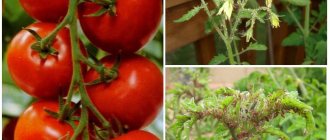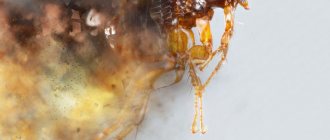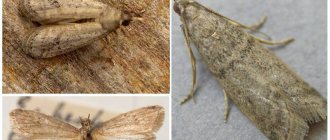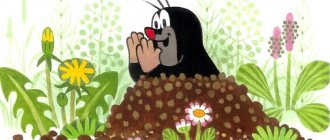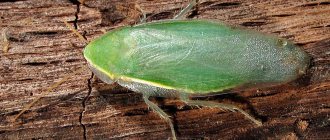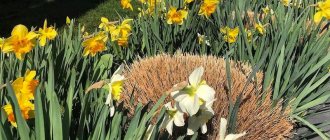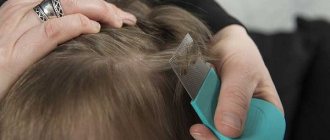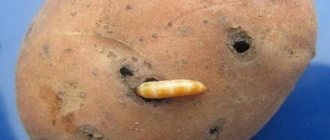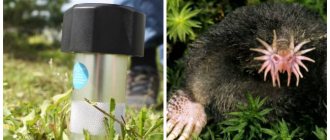What kind of pest is this
The melon, or cotton, aphid belongs to the class of insects, the family True aphids.
This type of aphid infects more than 330 plant species: cucumbers, watermelons and melons, pumpkin, cotton, tobacco and others.
In weather conditions in the middle zone, it becomes active in the first half of July. In greenhouses, cucumbers can be attacked by the pest as early as mid-May.
The parasite is widespread everywhere.
What does it look like
The size of the insect is 3-4 mm. The body of the melon aphid is elongated, pointed towards the rear tip. The body is colored in different shades of green, the legs and antennae are dark brown or black. There are winged and wingless individuals.
The oral apparatus is of a sucking type, equipped with a proboscis, with the help of which the insect pierces the plant tissue and sucks out the cell sap.
Our photos will help you identify the pest.
How does it reproduce
In the spring, the colony begins with larvae. They hatch from eggs laid on weeds in the fall at an air temperature of +5ºC. The larvae are able to overwinter under the leaves of winter-green plants, for example, in greenhouses.
After molting, the larvae transform into wingless females and begin asexual reproduction.
As the colony becomes denser, winged individuals appear, which fly and are carried by the wind to neighboring plants, where they form new colonies.
During the summer, dozens of generations of females are born, the offspring from one larva reaching tens of thousands of individuals.
In autumn, winged males emerge and fertilize females, who again lay eggs. It is these offspring that are able to survive the winter and begin the next life cycle.
How to recognize damage to cucumbers by melon aphids
On cucumbers affected by aphids, the leaves droop, curl, and fade. Flowers and ovaries fall off.
On the back of the leaves, small insects and a shiny thin film of sugary waste products of aphids are visible. As the colony grows, insects settle on stems, buds and young shoots.
Damage caused
Parasites pierce cucumber leaves with their proboscis and feed on their juice. The leaf blade wrinkles and dries out. The processes of photosynthesis and the formation of nutrients are inhibited. Fruit growth and formation slow down.
If uncontrolled reproduction, an aphid colony can lead to the death of the plant and complete loss of the harvest.
In addition, aphids transmit viral diseases, so the pest invasion is often accompanied by outbreaks of cucumber mosaic.
Melon aphid on zucchini
Melon aphid on zucchini
Zucchini is less susceptible to aphids than watermelons, but they also suffer from its invasion. The melon aphid on zucchini is located mainly on the lower tier of leaves. When affected by the disease at the flowering stage, the stalks die. With later infection, the fruits suffer, they shrink and dry out.
Methods for killing aphids on zucchini
If the zucchini is infested with melon aphids, control measures should be taken without delay. You can start with more gentle methods. Pollinate the bushes twice a day with sulfur powder or water with a soap solution. You need to take 100 grams of soap per bucket of water. In case of mass destruction, special drugs will be required. Intravir, Iskra and 10% Karbofos have a good effect. It is prohibited for both people and animals to eat vegetables after processing for the time specified in the instructions.
How to fight
It is not difficult to destroy aphids; the insect is susceptible to the action of various drugs.
There are two rules for a successful fight:
- Simultaneously with the destruction of the parasite, take measures to eliminate the ants.
- Treatment with any means should be carried out not only from the top, but also from the bottom side of the sheet.
Chemicals
Insecticides have a powerful effect against aphids:
- "Metaphos" is a contact action drug. The active ingredient is parathion-methyl. Available in the form of an emulsion in ampoules of 5 ml. To prepare the working solution, the contents of 2 ampoules (10 ml) are diluted in 10 liters of water. Treatment is carried out in the early morning or evening. The last spraying is no earlier than 30 days before harvesting the fruits.
- "Decis Lux" is an emulsion of contact-intestinal poison based on deltamethrin. Packaged in ampoules or bottles of various sizes. To treat cucumbers, 5 ml of the drug is dissolved in 20 liters of water. Cucumbers are sprayed when the first specimens appear, and when they appear again - after 2 weeks. The waiting period before harvesting is 20 days.
- "Inta-Vir" is a chemical of contact-intestinal action. The main substance is cypermethrin. It is produced in the form of tablets weighing 8 g. To combat aphids, dilute 1 tablet in 10 liters of water. Processed during the growing season at least 20 days before harvesting cucumbers.
Important! When working with chemicals, you need to wear closed clothing, a hat, gloves and a respirator. After work, be sure to wash your hands and face with soap and wash your clothes.
Biological products
Biological products are less toxic to humans and beneficial insects. They have a delayed effect; the death of parasites occurs 1-3 days after treatment.
Among such products, “Fitoverm” and “Aktofit” are popular among vegetable growers, which have a nerve-paralytic effect on pests.
| A drug | Active substance | Preparation of working solution | Frequency of treatments | Consumption rate | Waiting period |
| "Fitoverm" | 5% aqueous emulsion of aversectin C | 2 ml per 1 liter of water | 1-2 with an interval of 2-3 weeks | 100 ml per 1m² | 1-3 days |
| "Aktofit" | 0.2% alcohol solution of aversectin C | 8 ml per 1 liter of water | 1-2 with an interval of 2-3 weeks | Until the sheet is completely wetted. When drops of liquid drain, transfer the stream to another surface to be treated. | 2 days |
Reference. The standards for preparation and consumption of solutions are given for the control of aphids on cucumbers. When using drugs on other crops or against other pests, you should carefully read the instructions.
Folk remedies
Budgetary folk remedies against melon aphids on cucumbers are good as a preventive measure and in the initial stages of infection. The most common recipes:
- Shag or tobacco. Pour 300 g of dry shag (tobacco) into 10 liters of water, leave for 2 days, strain before use and add 70 g of grated tar soap.
- Vinegar. 7 tbsp. l. Dissolve 9% vinegar in a bucket of water.
- Hot pepper. Grind 50 g of red hot pepper pods, pour in a liter of boiling water and leave for 2 hours, strain and dilute with 10 liters of water.
- Celandine. Pour 200-300 g of dry herb into a bucket of water and leave for a day, strain before use.
- Garlic. Chop 500 g of garlic, add 3 liters of water and leave in a dark place for 5 days. To prepare the working solution, take 50 ml of infusion per 10 liters of water.
- Ash and laundry soap. 50 g of wood ash and 70 g of grated laundry soap are mixed with 10 liters of water.
Vegetables are sprayed with one of the listed products until the pest completely disappears at intervals of 7 days. The optimal consumption is 1 liter per 10 m2.
Plants that repel pests
To create a natural barrier against aphids, fragrant plants are planted next to the cucumber beds: garlic, marigolds, cilantro, fennel, basil, thyme, peppermint.
How to recognize cotton aphids
The wingless female aphid has a pear-shaped body, 1-2.1 mm in length and 0.9-1.5 in width.
The body color is matte and varies from yellow-green to dark green, almost black. The head and chest are darker, but some individuals have no differences in the color of these parts of the body. There are no antennal tubercles on the head, the forehead is slightly convex. The antennae are yellow, consist of 6 segments, reaching 75% of the body length. The spine of the last antennal segment has three apical setae. The length of the Spitz is equal to the third segment of the antenna. The eyes are brown-brown in color. Marginal tubercles are located on abdominal segments 1 and 6. The legs are usually yellow, and the tops of the femurs, tibiae and tarsi are black. The base of the proboscis is light, the last two segments are dark. The juice tubes are slightly widened at the base, cylindrical in shape, black in color, 2 times longer than the tail and make up about 20% of the body length. The finger-shaped tail has an interception at the base and three pairs of lateral hairs. The color of the tail is usually the same as the body. Spiracles are oval. The winged female has an elongated body. The color of the head, chest, juice tubes, ends of the legs and paws is black. The coxae of all legs and the apices of the hind femurs are black-brown. The abdomen is yellow-green, darker at the apex, and has rectangular dark brown spots on the sides. There are dark stripes on the dorsal side of the abdomen. The antennae are longer, compared to the wingless specimen. The forehead between the antennae is triangular in shape. Eye color is brown-burgundy. Two ocelli are adjacent to the compound eyes from above, and the third is located between the antennae on the forehead. The location of the rhinaria on the third segment may differ on the right and left antennae. The number of rhinaria of the third segment varies from 5 to 12. On the 6th antennal segment there is one main and five additional rhinaria. The tail is brown, finger-shaped with three pairs of lateral hairs, slightly extending beyond the sap tubes.
Winged cotton aphid
Preventive measures
The risk of aphids is significantly reduced with proper care of vegetables, so it is important to follow the watering and fertilizing regime.
The following measures have a preventive effect:
- Ant population control. To combat ants, the drugs “Absolut”, “Aardeater”, “Grom-2” and others are used.
- Disinfection of soil and greenhouse structures with bleach (400 g per 10 liters of water) before planting vegetables.
- Thorough removal of all plant debris from the beds. Aphid larvae can survive on weeds and tops remains.
- Compliance with planting schemes: no more than 4 cucumber bushes are planted per 1 m2. Density promotes the rapid spread of pests.
- Regular inspection of plants. Weekly inspection of leaves allows you to detect pests earlier and begin timely control.
Description and characteristics of the pest
The melon or cotton aphid is a small insect whose size varies between 1.1–1.9 mm. During the larval phase, this pest survives the winter under the basal foliage of weeds. In the spring they wake up and begin to multiply intensively. Winged specimens develop and migrate to vegetable crops. By this period, leaves are already appearing on the cucumbers, which provide food for the enemy of the plantings.
In addition to being gluttonous, aphids also spread various viruses, infecting cucumber plantings. Insects lead an inactive lifestyle, but are able to move quickly.
One aphid offspring develops within a decade. Female pests are very productive. Under favorable conditions (air humidity 80% and temperature +23°C), they quickly spread over a large area. At a temperature of +30°C, the reproductive capacity of aphids decreases.
To identify a pest, it is necessary to distinguish between indicators of plant damage:
- curling, and then yellowing and large-scale falling of leaves;
- a sharp decrease in the growth rate of the bush;
- When the leaves turn, concentrations of small insects are noticeable.
On cucumbers, aphids are almost invisible - they have a colorless or dark green tint. It covers not only the leaves, but also spreads to flowers and young shoots. At the initial stage there are no obvious signs of damage. The presence of the pest is determined by the drooping tips of the foliage.
Tips and tricks
Experienced vegetable growers recommend planting varieties and hybrids with complex disease resistance. They are distinguished by a strong root system, powerful vegetation and recover faster from pest attacks. It is worth paying attention to the hybrids Murashka F1, Boy with Thumb F1, Masha F1, Pasadena F1.
To combat the parasite, it is useful to attract birds and insects that eat aphids to the site. To attract sparrows, tits, and linnets, feeders are hung around the garden plot.
Planting dill and mustard next to cucumber beds will attract ladybugs - natural enemies of aphids.
Agrotechnical control measures
If this insect begins to actively develop on the site, then, most likely, treating the plants with chemicals or special decoctions cannot be avoided. You can also fight the annoying melon aphid using agrotechnical methods. They include the destruction of plants that contribute to the development of this pest, and the attraction of the most dangerous enemies from the insect world. At the beginning of the article it was mentioned that initially aphids lead an active life on garden weeds, so you should regularly weed the beds to remove unwanted guests.
You can also plant special plants on your site that will help you get rid of aphids. They can be scary or attractive. The former emit odors that this insect cannot tolerate, so it should be planted around protected garden crops. The latter, on the contrary, attract aphids, and they move onto them, leaving the vegetables alone. Such flowers and trees should be planted to the side. So, aphids cannot stand the smell of garlic, onions, fennel, coriander, basil, marigolds, mint, mustard, lavender and some types of chamomile. But petunia, beans, soporific poppy, mallow, viburnum, linden, bird cherry attract insects.
Some insects and birds are reliable helpers; they eat melon aphids that live on tomatoes or other garden crops. Ladybugs are one of the dangerous enemies, so you can even collect them in the fall and place them in a greenhouse. Hoverflies, earwigs, and some types of wasps are also capable of fighting effectively. By planting fragrant herbs in your garden, you will attract beneficial insects to your plot.
So that sparrows, kinglets, titmice, linnets, wrens and other birds that feed on green insects do not forget about you and not only delight you with their beautiful singing, but also actively fight small pests, you should build feeders and drinkers for them in winter. Only if you decide to fight aphids by attracting a living army of birds and insects, then do not use chemicals, as they are destructive to your allies.
Pests of cucumbers and their characteristics
Cucumber pest control includes traditional and folk remedies.
The insect overwinters in the basal leaves of weeds. In the spring it begins to actively reproduce, spreading throughout the area. The pest especially likes melons and melons.
Aphids are up to 2 mm in size; the insect settles on the lower part of the leaves, forming numerous colonies that can destroy the harvest of cucumbers and other melons.
Peak pest activity is mid-summer. On cucumber leaves you can see hordes of black or green insects. Due to the invasion of aphids, flowers and ovaries are affected, leaves curl and dry out. A dehydrated plant gradually dies. When these insects are discovered, it is necessary to immediately begin fighting them.
Spider mite
Spider mites are small pests that are very difficult to notice. Its dimensions can range from 0.3 to 1 mm. The presence of an arthropod is indicated by a white cobweb entangling the leaves. The mite is the record holder for its ability to infect plants. It sucks out the sap, weakening the plant. The color of the tick is varied: yellow-green, white, orange, red. The pest lives on the lower part of the leaves and can occupy the entire bush. If the lesions are not treated in time, the death of the plant is inevitable.
Black flea beetle
The black flea beetle is a tiny dark-colored bug (1.8–3 mm).
The black flea beetle makes a sieve from cucumber leaves, sucking out the juice of the plant and gnawing through the tissue.
Insects overwinter in the top layer of soil. Pests move quickly, jumping from one leaf to another. The black flea beetle is the most dangerous variety of cruciferous flea beetle. If these insects are not noticed in time, leaf beetles can destroy cucumber seedlings in a few days.
Whitefly
Insects of flour color up to 1.5 cm, with two pairs of wings covered with a waxy coating. Small hairy larvae (no more than 0.3 mm), feeding on the sap of leaves, have an abdomen with thin threads at the end, they are colored pale green. If you lift a leaf, you can see white insects on its reverse side that fly up when you touch the plant. The pests look like translucent scales clinging to the bottom of the cucumber leaf.
Whitefly forms colonies on the undersides of leaves
This pest is the most common insect that has to be combated when growing cucumbers both in open ground and in greenhouses or greenhouses. After whitefly damage, many light spots appear on cucumber leaves. Affected plants first turn yellow, then lose leaves and stop bearing fruit. The whitefly is a carrier of viral infections that can destroy all cucumber plantings.
